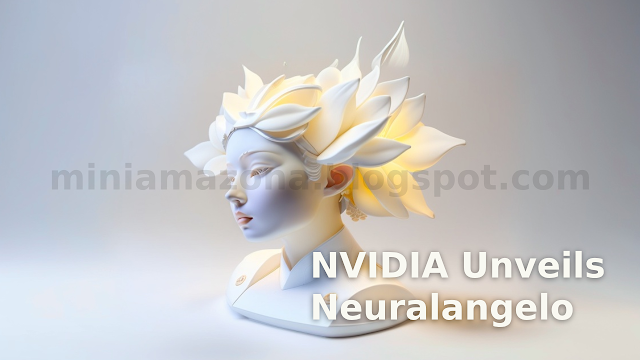A new tool developed by NVIDIA called Neuralangelo has made waves in the artificial intelligence (AI) community. The cutting-edge software has the remarkable ability to create complex 3D objects and structures from 2D video footage. This breakthrough innovation has the potential to revolutionize AI and address some of its most significant challenges.
The Power of NVIDIA Neuralangelo: Generating Lifelike 3D Replicas from 2D Videos
NVIDIA's Advanced AI Model Sets New Standards for 3D Reconstruction
NVIDIA has introduced Neuralangelo, an advanced software program capable of generating incredibly detailed and lifelike 3D replicas from ordinary 2D video footage. Unlike previous attempts, Neuralangelo excels in capturing repetitive texture patterns, detailed colors, and intricate structures. This breakthrough in AI technology marks a significant step forward in 3D reconstruction capabilities.
Unleashing Creative Possibilities: Bridging the Gap Between Real and Virtual Worlds
A Game-Changer for Creators and Developers
Neuralangelo's 3D reconstruction capabilities open up exciting opportunities for creators and developers. With this powerful tool, creators can recreate real-world objects and structures in digital environments with unparalleled precision. From small statues to massive buildings, Neuralangelo enables developers to import detailed objects into virtual reality settings, video games, and industrial digital twins. The software's potential impact on the creative industry is enormous.
Behind the Scenes: How Neuralangelo Works Its Magic
Mapping and Optimization for Flawless 3D Interpretation
Neuralangelo's process involves analyzing 2D videos from various angles to extract keyframes that provide a comprehensive view of the subject. The software then determines the optimal camera positions for each frame to create a rough 3D interpretation. This initial render undergoes meticulous optimization, refining details, and producing a final 3D object of exceptional quality. The sophistication of Neuralangelo's algorithms sets it apart from earlier AI models.
Overcoming AI's Struggles with Complex Shapes and Structures
The advent of AI-generated 3D models represents a significant leap forward in artificial intelligence. Previous AI art projects often struggled to comprehend and replicate complex shapes and intricate details. By incorporating 3D-generated models, AI systems can better understand and recreate challenging forms, such as hands. This breakthrough technology paves the way for advancements in various fields, including AI-generated art, gaming, and industrial simulations.
Conclusion
NVIDIA's Neuralangelo has redefined the possibilities of AI-generated 3D modeling. With its advanced 3D reconstruction capabilities, the software bridges the gap between the real and virtual worlds. Creators and developers can harness Neuralangelo's power to import detailed objects into digital environments, opening up a realm of creative opportunities. This breakthrough technology not only addresses AI's struggles with complex shapes but also pushes the boundaries of artificial intelligence itself. As Neuralangelo and similar advancements continue to evolve, we can expect profound transformations in various industries, powered by the remarkable capabilities of AI.

